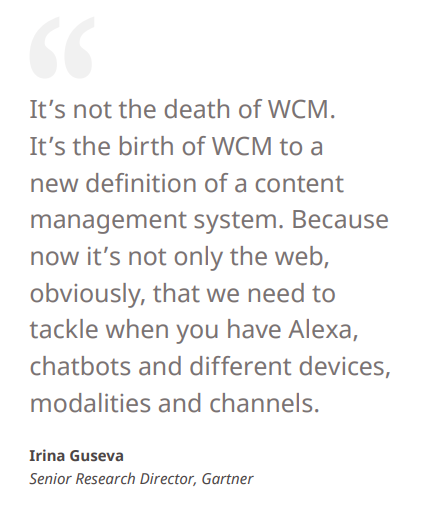The new age of content management | Brightspot
Uncategorized
How Content Management Has Changed
In recent years, as digital transformation accelerated, content management has evolved significantly. At the beginning of 2020, Gartner retired its Magic Quadrant for Web Content Management (WCM), stating the market had matured and products had become homogenized. This shift did not indicate the end of content management; instead, it signaled its expansion beyond the web to encompass the diverse digital channels consumers now engage with, such as chatbots, voice assistants, and social media.
At Brightspot, we firmly believe that every business is now a content business. We’ve observed a significant change where content is central to strategies across various sectors, not just media and publishing. eCommerce companies, B2B brands, and more are leveraging content to reach customers in innovative ways.

Brand identity has never been more crucial. Today, people connect with brands through content rather than just specific products or services. A consistent brand image and message across all platforms can increase revenue by up to 23%, and 77% of marketers recognize branding as essential for future growth.
Amid the unpredictability of global pandemics and economic fluctuations, the only constant is change. Businesses require solutions that not only address today’s challenges but also adapt to future, unforeseen issues swiftly.
Content management has transformed from what it was a few years ago. The proliferation of channels and the need for deeper customer connections have redefined how businesses use content to build brands and foster loyalty. The reliance on legacy platforms is no longer sufficient; modern, scalable solutions are necessary to transform content businesses for the present and future.
The Old Way of Running a Content Business
Content management systems (CMS) have significantly evolved since the early 2000s. As technology advanced, CMS platforms adapted to support new design features, various media platforms, and increased interoperability. However, despite these advancements, content management often became characterized by cumbersome technology that hindered growth and scalability rather than enhancing it.
Several key aspects defined the traditional approach to running a content business:
- Heavy reliance on IT: The introduction of technologically advanced tools for website creation and updates necessitated significant IT and developer support. Complex pre-built connectors made integrations difficult and time-consuming, while content publishing was slow and labor-intensive due to a lack of user-friendly features and workflows.
- Limited scalability: Organizations and publishers today manage extensive portfolios of websites globally, requiring seamless migration, integration capabilities, and custom workflows to scale efficiently. However, traditionally, adding or building new sites demanded substantial IT support, and aligning existing technology with other systems proved cumbersome, impeding scalability.
- A one-to-many approach: Rigid, built-in templates resulted in static content output, and despite the data boom nearly a decade ago, many CMS platforms did not and still do not facilitate easy integration of existing data and sources. Consequently, organizations and publishers often prioritize content quantity over quality, leading to impersonal experiences for consumers.
- How Content Management Has Changed
- The Old Way of Running a Content Business
- How Digital-First Content Businesses Are Structured Today
- What’s Next for the Future of Content Management
- The Evolution of Brightspot’s Content Platform
Number of Pages:
- 10 pages
Pricing:
- Free





